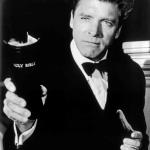My best friend was once dating a herpetologist (reptile biologist). When he heard I was a pastor, he told her to ask me how I thought that the 5 million species in the animal kingdom were packed into a boat about a football field long and 5 stories tall (which are the measurements the Bible gives for Noah’s Ark). The herpetologist was shocked to hear me share my belief that Noah’s flood was not a historical event, but a Hebrew modification of a common ancient Near Eastern legend that God used along with modified versions of other ancient legends to teach His people important truths about Himself. God had no reason to teach the ancient Israelites the intricacies of nuclear biology or quantum physics, which they wouldn’t have been able to grasp, so He explained His creation of the world (through the Biblical authors) by using much more accessible stories they were already familiar with.
I learned this way of talking about Genesis from reading Peter Enns’ Incarnation and Inspiration, a book which has helped many evangelical pastors like me to reject the false wedge between science and the Bible that fundamentalists use as part of their ecclesiopolitical power play. It was also a book that cost Dr. Enns his job at Westminster Seminary. Incidentally Enns has a new book to be released in January 2012 called the Evolution of Adam, that you should definitely check out.
The controversy over whether or not the primordial stories of Genesis are historical or allegorical reveals a basic fault-line in American evangelicalism between fundamentalists who need for the gospel to be hard for others to swallow (perhaps because they’re trying to “earn” their salvation through anti-intellectualism) and true evangelicals whose genuine interest in sharing the gospel makes them yearn for a way of explaining the Bible that will not get laughed out of the room by herpetologists and others whose life vocations make it impossible for them to treat a divinely-inspired ancient Hebrew poem like a biology textbook. In any case, the latest controversy in this sad waste of God’s time called the evolution/creationism debate is that some conservative evangelical biologists are “coming out” as legitimate scientists and ruling out the possibility of a single original homo sapien couple named Adam and Eve based on their genomic research.
The latest fundamentalist to weigh in on this topic is Al Mohler, the president of Southern Baptist Seminary. Mohler writes that without a historical Adam and Eve, “we will have to come up with an entirely new understanding of the Gospel metanarrative and the Bible’s storyline.” I agree. It’s time to jettison forever from Christian doctrine the abominably stupid idea that God blames people today for the actions of some random historical figure named Adam. There is a more Biblically accurate and compelling way of explaining original sin.
First of all, adam (אדם) should always be written lower-case, since it is just the Hebrew word for man. (I have often wondered if fundamentalists don’t learn Hebrew in seminary because they think the Bible was written in King James English.) If we were reading Genesis 3 in Hebrew, we wouldn’t call it the story of Adam and Eve, but the story of “the man” (האדם, h’adam) and “the woman” (האשה, h’ishah). The woman doesn’t get named חוה (chivah, or the Anglicized Eve) until Genesis 3:20 after they are kicked out of the garden. If h’adam had just been translated into English as “the man” every time it appears instead of falsely transliterating it into the proper noun Adam, so much idiocy would have been avoided in the last couple of centuries.
In any case, I think a more robust doctrine of original sin emerges if we read the story of the man and the woman as an allegory which can represent two moments that together explain the problem of original sin: 1) the primordial moment when our hominid ancestor(s) first gained the self-awareness, represented by the “fruit of knowledge,” without which creatures are not capable of deliberate behavior that could be called sin, and 2) the personal moment in every human’s life when we first express our independence by refusing to do what we are told.
As human beings, we are all born into a world in which somebody will inevitably hurt us partly because they have been hurt by someone else. We will then hurt other people partly because of the hurt we have received. We cannot avoid the endless chain of sin which we didn’t start but nonetheless get swept into. This chain extends backwards to our primordial ancestors. Who started this chain of sin? The Hebrew Biblical writers didn’t try to name the original culprits since all humans throughout history share the responsibility collectively, so they called the actors simply “the man” and “the woman.”
All of us together as man and woman have participated in eating the fruit from the tree of knowledge of good and evil, which has left us with the curse of self-awareness that means we are no longer part of an un-individualized immortality in which animals’ bodies cycle through birth and death within a species that lives on forever according to the Earth’s natural equilibrium. We are under the curse of mortality and sin because we have been individualized and are no longer just part of a collective herd. It makes sense for the beginning of sin to be associated with the moment that “the eyes of [the man and woman] were opened, and they realized they were naked” (Genesis 3:7). Sin can only exist in the context of self-awareness. Once we gain self-awareness as a species, then we become self-centered people who quarrel with one another, squander the resources of creation God has given us, and generate an enormous residue of pain and guilt that no human being can avoid being tainted by. It is a curse for which we did not ask, but it does no good to blame God, since humanity has entered into this curse through our combined actions as a species.
Alongside the primordial history of humanity’s self-awareness, each of us has a personal history of self-awareness in which we not only “discover our nakedness,” but make a decision at some point to assert our autonomy and rebel against what we are told, like the man and woman did to God in Genesis 3. The decision to trust ourselves over our parents is an inevitable step in every child’s development. To some degree, it shouldn’t really be called a decision, but nonetheless it results in a spiritually fatal predicament from which we must be rescued, because it begins the phenomenon that Augustine called homo curvatus in se (humanity curved in on itself).
In order to trust ourselves and have any kind of epistemic stability, we need for our actions to make sense. Inevitably, we arrive at moments when we have to face our mistakes, which puts us in an epistemic crisis we too often resolve by falsely justifying our behavior, twisting up our interpretation of reality to fit a self-narrative in which we made the right choice. Hundreds of self-justifying thoughts in response to mistakes we make, conflicts with other people, and situations in which we feel inadequate cause us to have an irreparably warped, or curvatus, impression of reality. We become slaves to our self-justification who are unable to admit our mistakes or resolve social impasses with other people because of our need to be right at all times. We require something from outside ourselves to deliver us from the prison of self-justification, which could be called our original sin on a personal level since the self-justifying impulse is what keeps dragging us into deeper sins.
In any case, I think it is high time we abandoned the claim that God blames us for the mistake of an ancient figure who only exists and has a name because of mistranslation. Original sin is such a more compelling doctrine once the stumbling block of historicity is kicked out of the way. We should instead understand “the man” and “the woman” to be allegorical figures representing how our species has collectively produced a reservoir of original sin that corrupts every single one of us even if we cannot assign its culpability with any clarity. Every human being lives in a default state of sin from which we must be rescued by God. This does not contradict the fact that God’s purpose in our creation is for us to participate harmonically in His created order as man and woman did before our fall into self-awareness and sin.
Though our default state is to be trapped by original sin, our most natural state is to live according to God’s purpose in His order of shalom. We start off being a shadow of who we really are, just like the first version of humanity, adam 1.0, was a shadow of Jesus, who was adam 2.0 (Romans 5:15-17). To be a potential human means being a creature who needs God’s deliverance from original sin. But to assume the full nature for which humans have been created, we need the “son of man” (ben adam) to live in our hearts.















